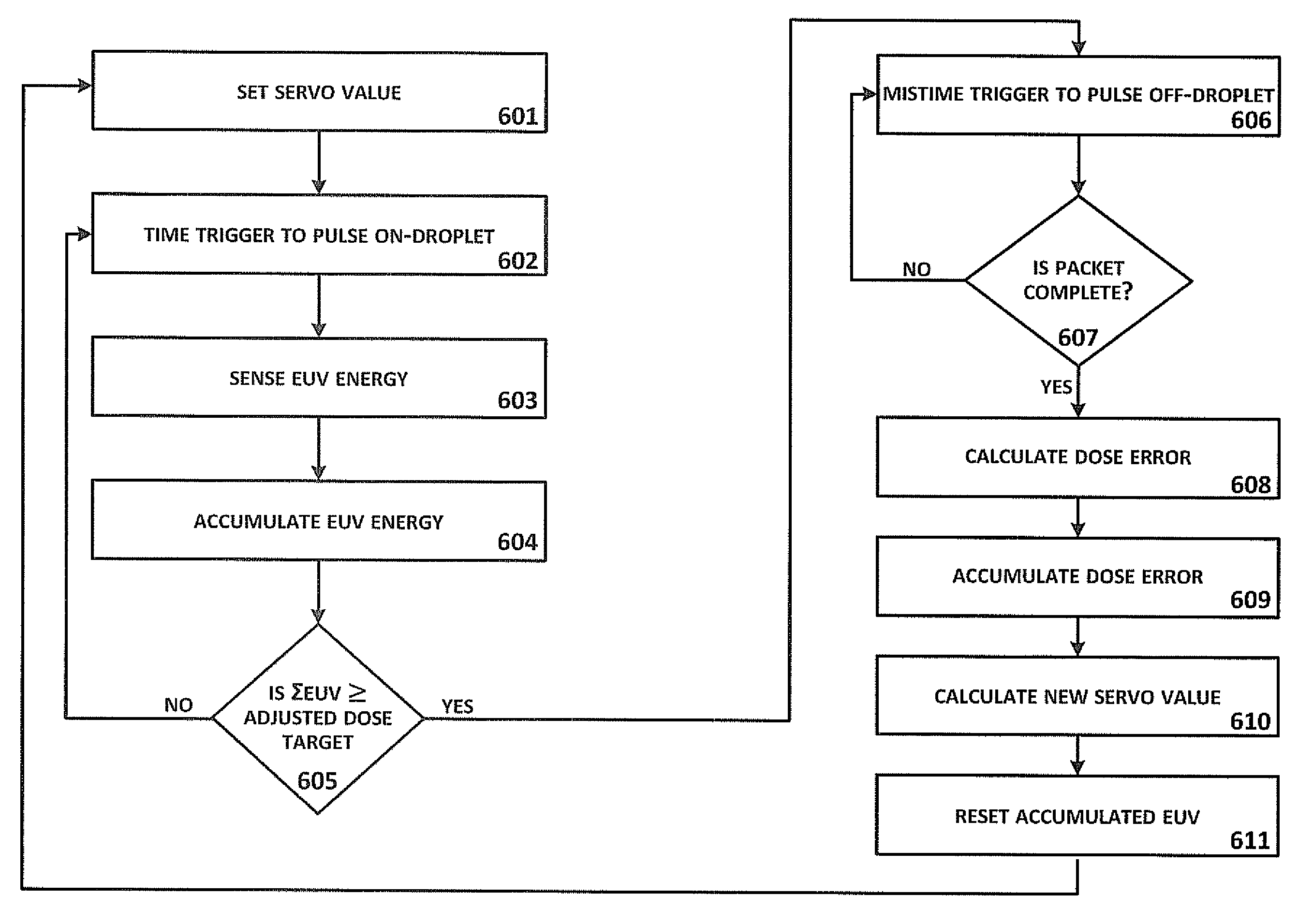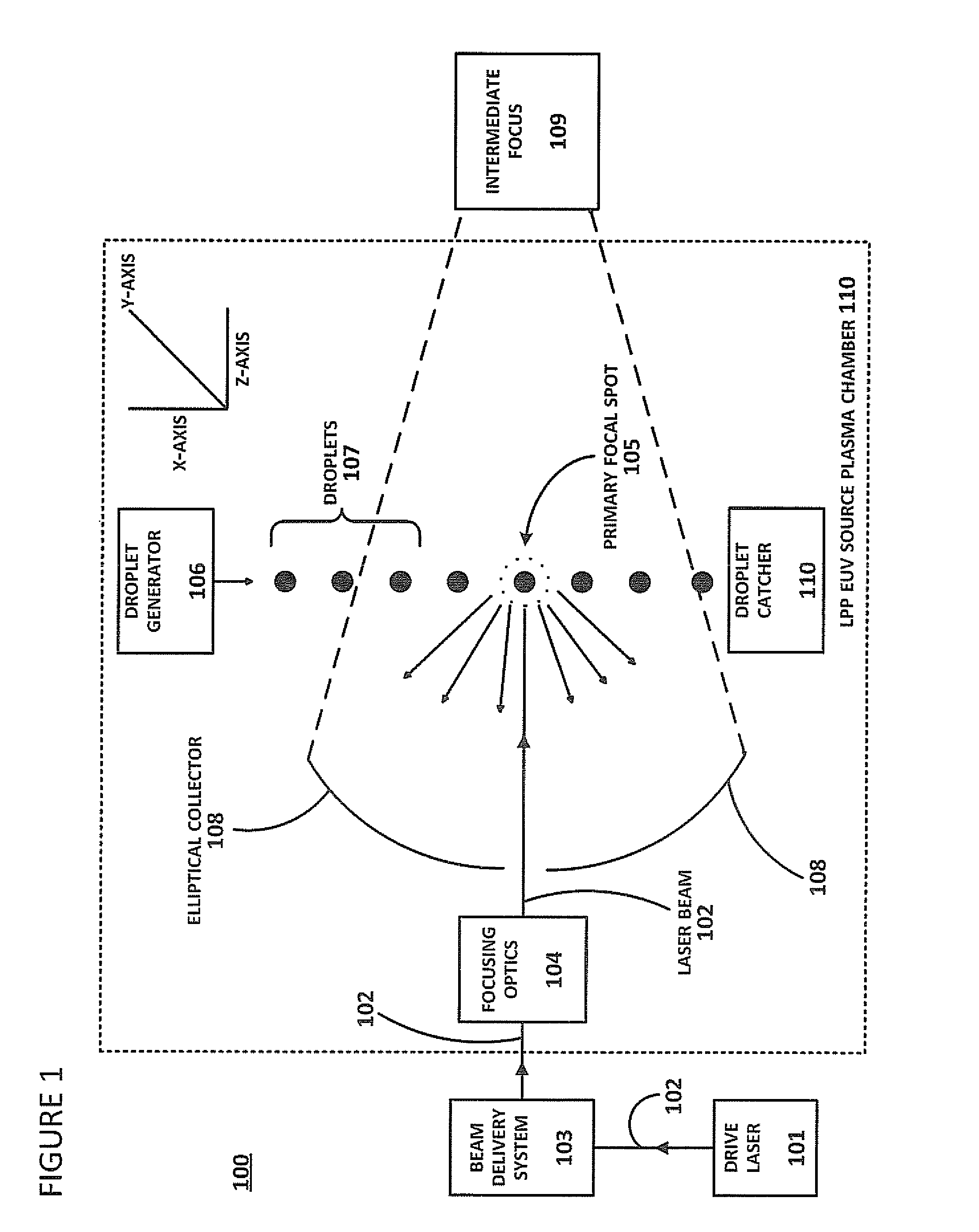Method of timing laser beam pulses to regulate extreme ultraviolet light dosing
a laser beam and pulse technology, applied in the field of photolithography, can solve the problems of time-consuming and laborious, variability in output, and difficulty in achieving maximum euv output light across bursts over tim
- Summary
- Abstract
- Description
- Claims
- Application Information
AI Technical Summary
Benefits of technology
Problems solved by technology
Method used
Image
Examples
Embodiment Construction
[0027]As discussed above, energy (light) output by an EUV system can be used downstream in a number of applications, e.g., semiconductor lithography. In a typical scenario, EUV output might be passed to a lithography scanner in stroboscopic bursts to irradiate photoresist on successive wafers. In laser systems with no master oscillator (i.e., “NOMO” systems), such stroboscopic bursts of energy are achieved by controlling RF pump power to switch a laser between “on” and “off” states. Thus, the amount of energy passed for downstream dosing is controlled by this RF power pumping.
[0028]MOPA laser systems (i.e., systems with a master oscillator and power amplifier, including those with a pre-pulse configuration, “MOPA+PP systems”) are capable of generating higher power output from a pulsed laser source than are NOMO systems, and are therefore preferable for some downstream applications. Downstream dosing in MOPA systems is not, however, as easily controlled as in NOMO systems because of ...
PUM
 Login to View More
Login to View More Abstract
Description
Claims
Application Information
 Login to View More
Login to View More - R&D
- Intellectual Property
- Life Sciences
- Materials
- Tech Scout
- Unparalleled Data Quality
- Higher Quality Content
- 60% Fewer Hallucinations
Browse by: Latest US Patents, China's latest patents, Technical Efficacy Thesaurus, Application Domain, Technology Topic, Popular Technical Reports.
© 2025 PatSnap. All rights reserved.Legal|Privacy policy|Modern Slavery Act Transparency Statement|Sitemap|About US| Contact US: help@patsnap.com



